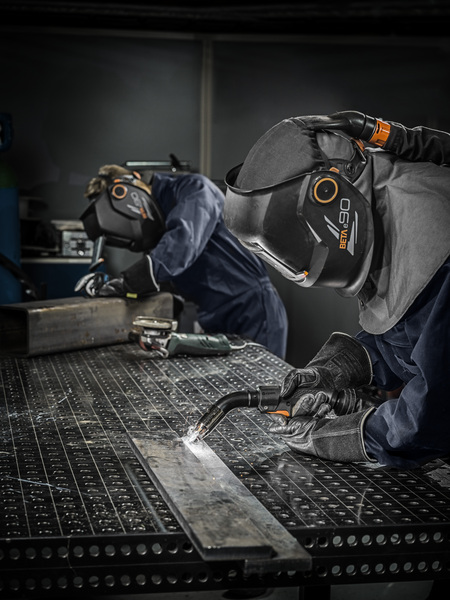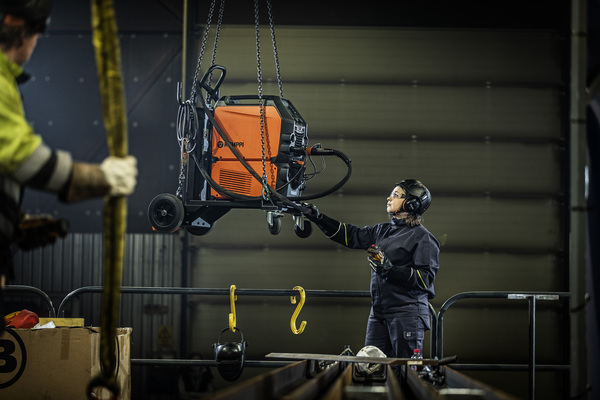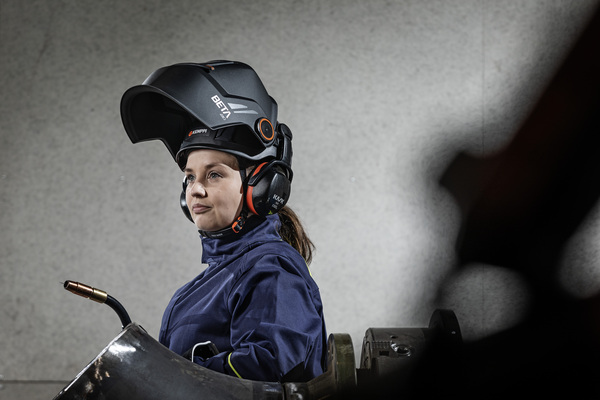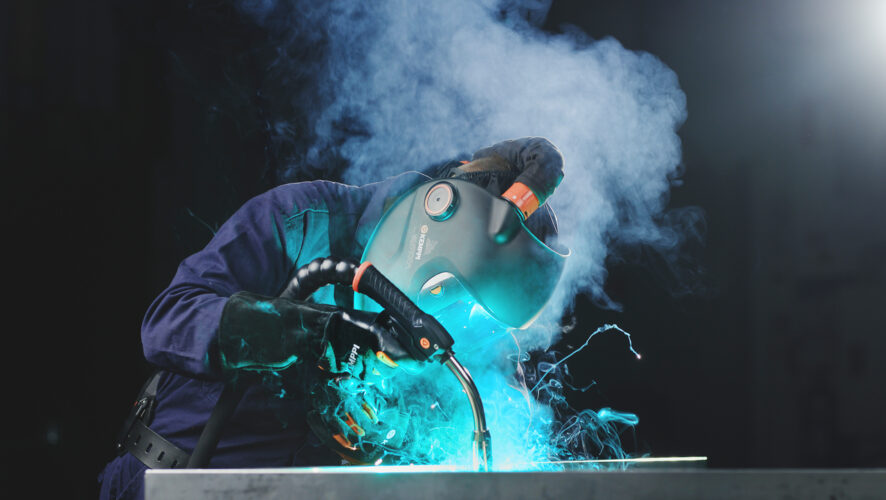Welding is an important skill that shapes our world, from the vehicles we use to the buildings we live in. This essential process also has its dangers, making safety a top priority. Knowing and following safety measures can significantly reduce accidents and injuries. Here, we explore major safety issues and the steps that every welder should take.
Common welding hazards
1. Exposure to welding fumes and gases
Welding can create dangerous fumes and gases that affect health and lead to respiratory illnesses, cancer, and impaired speech and movement. To reduce these risks:
- Control welding fume exposure through proper ventilation in the welding area.
- Always use an approved welding respiratory system when necessary.
- Know the materials you are welding with and their specific hazards.
- Regularly check the condition of your welding equipment and electrode holders.

2. Common physical hazards in welding
Welding and handling of heavy materials and equipment can lead to physical injuries like burns, eye damage, cuts, and crushed toes and fingers. To reduce these risks:
- Always use appropriate personal protective equipment, including a welding helmet and eye protection.
- Wear protective clothing, gloves, and footwear to prevent burns and cuts.
- Use lifting aids and proper lifting techniques.
- Keep work areas clean and free of tripping hazards.

3. Electric shock in welding
Electric shock, one of welders’ most serious hazards, can result in severe injury or death. To reduce these risks:
- Keep your gloves and clothes dry.
- Make sure all equipment is grounded well.
- Check welding equipment for electrical safety.
- Follow safety guidelines to reduce the risk.
- Avoid contact between the electrode or metal parts of the electrode holder and skin or wet clothing.
4. Fire and explosion hazards with welding
The sparks and spatter from welding can ignite flammable materials. To reduce this risk:
- Keep your work area tidy.
- Make sure nothing can catch fire near the welding area.
- Keep firefighting tools nearby.
- Check equipment often for signs of gas leaks or damage.
- Pay attention to the environment and report issues quickly.
5. Eye and face injuries
The eyes can be harmed by the bright light and UV and IR rays from welding, and the face can be hurt by objects that fly around. To reduce these risks:
- Put on a welding helmet with enough shade.
- Wear protective eyewear with side covers under the helmet.
- Make sure that other people nearby are also secured.
6. Hearing loss caused by noise
Certain welding processes or material handling can generate harmful noise levels. To reduce this risk:
- Use ear protection in areas with a high noise level.
- Keep equipment in good condition to lower noise levels.
- Limit the time of exposure to loud environments.

Embracing a culture of safety
Safety is not an optional extra for welding; it’s a mindset that every employee and manager should adopt and practice. Regular training, correct equipment care, and adherence to safety rules are essential to prevent welders from the dangers that come with their work. Remember, a good welding project is not only evaluated by its outcome but also by the safety measures that made it possible.
By prioritizing safety, we ensure our well-being and improve the excellence and honesty of our work. Let’s commit to making every weld and every day as safe as we can.
Discover Kemppi safety products >>> Welder’s safety and Flexlite GF fume extraction MIG welding gun.











